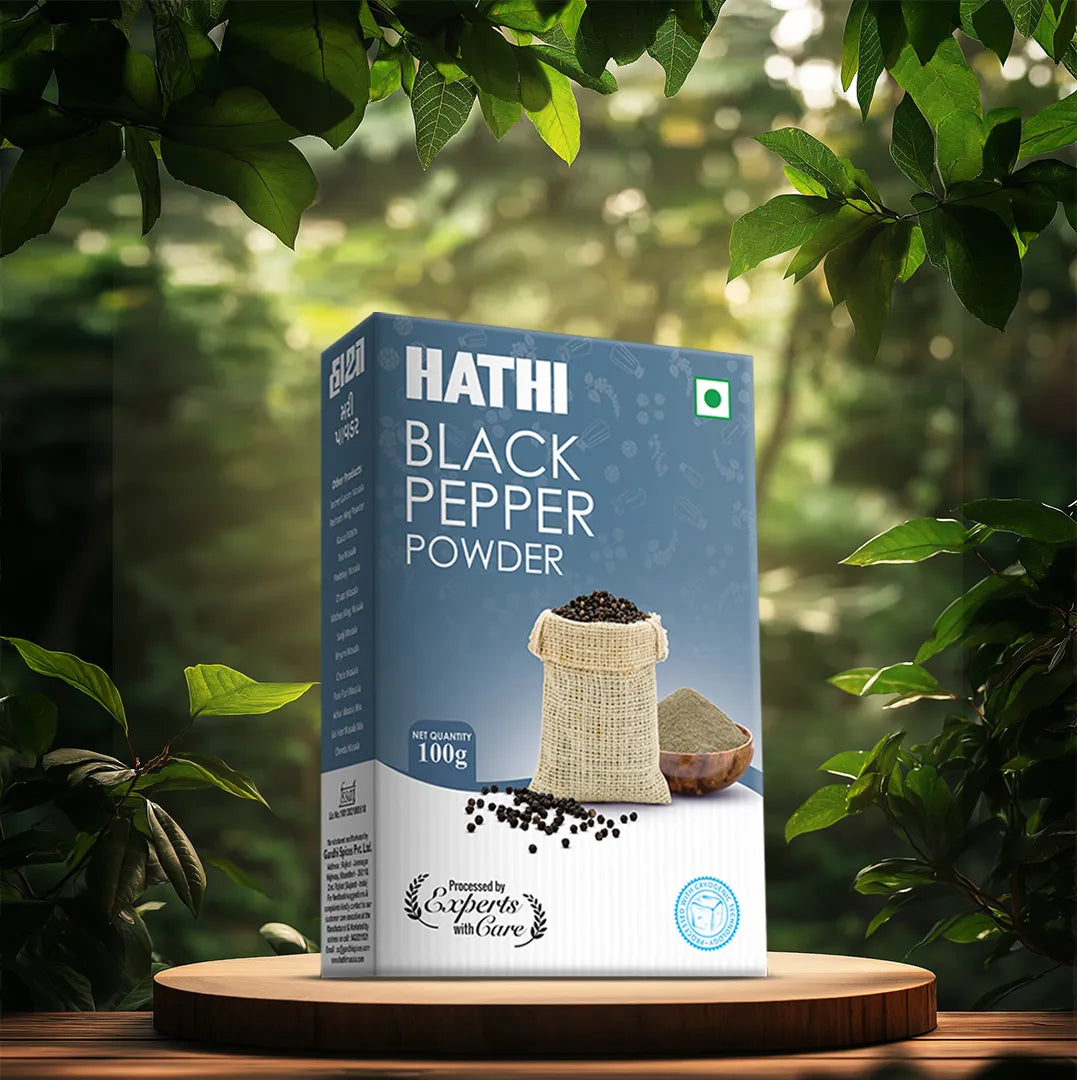Creating spice-infused oils at home can add incredible depth and aroma to your cooking. Whether you’re drizzling it over pasta, stirring it into soups, or adding a splash to salads, spice oils offer an easy way to elevate simple dishes. In this DIY guide, we’ll cover the essentials of making your own spice-infused oils at home. Making your own spice-infused oils is an easy and fun way to elevate your cooking. At Hathi Masala, we offer a wide range of premium spices to get you started on your flavourful journey! From choosing the right oils to selecting the best spices for flavour extraction, this step-by-step process will make you feel like a professional chef in your own kitchen. Let’s dive in!
How to Make Your Own Spice-Infused Oils: A DIY Guide
Spice-infused oils are a fantastic way to enhance your cooking, adding layers of aroma, depth, and complexity. Infusing oils with spices at home is straightforward, and it allows you to customise oils for your taste and cooking style. In this guide, we’ll explore the ins and outs of flavour extraction, the best spices and oils to use, and some creative ways to enjoy your culinary oils. Let’s dive into the details and discover how to make spice oils right in your kitchen.
What Are Spice-Infused Oils and Why Make Them?
Spice-infused oils are simply culinary oils that have been blended with spices to infuse flavour over time. The infusion process allows spices to release their unique flavours and aromas into the oil, resulting in an oil that’s packed with taste. These oils are perfect for everything from roasting vegetables to dressing salads, marinating meats, or adding a finishing touch to soups and stews. Making your own also ensures you’re using fresh ingredients without additives, providing a healthier and tastier alternative to store-bought options.
Choosing the Right Base Oil: Types and Tips
Each type of oil brings its own characteristics to the final infusion. Here’s a deeper look at some popular options and how to choose the best one for your infused oils.
1. Olive Oil

Known for its robust, fruity flavor, olive oil is ideal for Mediterranean and Italian-style infused oils. Extra virgin olive oil is best for cold dressings and drizzles, while lighter olive oils can be used for cooking infusions.
2. Canola Oil

This oil is neutral in flavour, making it a versatile base for almost any spice. It’s also suitable for high-heat cooking, so if you’re planning to use your infused oil for stir-fries or frying, canola is a good option.
3. Sunflower Oil

With a mild, delicate taste, sunflower oil is perfect for infusions that should highlight the spice flavours rather than the oil itself. It’s light and suitable for drizzling over salads or as a finishing touch on cooked dishes.
4. Coconut Oil

Coconut oil brings a distinct tropical flavour, so it pairs well with warming spices such as cinnamon, cloves, and even chilli. However, coconut oil solidifies at cooler temperatures, so it’s best used for cooking rather than salad dressings.
5. Sesame Oil

A great choice for Asian-inspired spice oils, sesame oil works well with ginger, garlic, and chilli. Since it has a strong flavour, use it for dishes where you want a pronounced taste.
Tip: For the freshest results, always use a high-quality oil. Avoid oils with strong aftertastes unless they align well with the spices you’re using.
Selecting the Best Spices for Infusion

The spices you choose will determine the flavour, aroma, and complexity of the infused oil. Here’s a detailed look at some popular spices and their characteristics:
Chilli Flakes
Adds a sharp, spicy heat to the oil. Chilli-infused oils are excellent for adding a kick to pasta, stir-fries, pizzas, and grilled meats.
learn more about chilli flakes
Garlic
Known for its pungent, savoury aroma, garlic is a classic choice for infusions. It pairs well with rosemary, thyme, and basil, making it a versatile addition.
Rosemary
A woody, aromatic herb, rosemary adds depth and a slight bitterness that pairs well with olive oil. It’s perfect for meat marinades and roasted vegetables.
Basil
A sweet, peppery herb with a fresh aroma, basil-infused oil works beautifully in Italian dishes, salad dressings, or as a dip for bread.
Turmeric
Known for its earthy, warm flavour and vibrant colour, turmeric works well in sunflower or canola oil. Try pairing it with cumin or ginger for an Indian-inspired oil.
Ginger
With its spicy, peppery undertone, ginger makes an ideal oil for Asian-inspired dishes. It’s wonderful for stir-fries, dressings, or as a finishing oil for soups.
Tip: Always use dried spices or herbs for a longer shelf life. Fresh ingredients have moisture that can encourage spoilage.
For more ways to enhance your dishes, explore our Hathi Masala spice collection, perfect for infusing with any of these oils.
Step-by-Step Guide to Making Spice-Infused Oils
Creating spice-infused oils at home involves a few simple steps but requires attention to detail for the best results. Here’s how to make your own in a safe and flavourful way.
Step 1: Gather Ingredients and Equipment
For a basic infusion, you will need the following:
- 1 cup of your chosen oil (as per your taste preference)
- 1-2 tablespoons of dried spices (use more if you want a stronger flavour)
- A saucepan for heating
- A glass bottle or jar with a lid for storage
- A sieve or cheesecloth for straining
Step 2: Prepare the Spices
To release the flavours from spices, consider lightly toasting them:
- Place your spices in a dry pan over medium heat.
- Toast for 2-3 minutes, stirring continuously, until you smell the aroma. Be careful not to let the spices burn, as this will lead to a bitter taste in the oil.
Step 3: Heat the Oil and Spices Together
- Pour the oil into a saucepan and add the spices.
- Heat over low heat; avoid letting the oil reach a smoking point, as this can alter its taste and quality.
- Allow the oil to warm with the spices for about 15-20 minutes. This gentle heating process helps the spices release their flavours without compromising the oil’s integrity.
Tip: Do not boil the oil, as high heat can cause the spices to taste burnt.
Step 4: Cool and Strain the Oil
- Remove the oil from the heat and let it cool completely.
- Using a sieve or cheesecloth, strain the oil into a glass bottle, removing the spices to prevent further flavour changes.
- Close the bottle tightly and store the oil in a cool, dark place, preferably in the fridge, for the best freshness.
Looking for more tips on infusing oils or perfecting your spice blends? Visit our other blogs for expert tips.
Creative Infusion Ideas and Recipes to Try
Once you’ve mastered the basics, get creative with different spice combinations! Here are some popular flavour combinations for you to try:
1. Garlic Chilli Oil
Combine 1 cup olive oil, 3 cloves garlic (sliced), and 1 tablespoon chilli flakes. Perfect for drizzling over pasta, pizza, or grilled vegetables.
2. Rosemary Lemon Oil
Use 1 cup olive oil, 1 tablespoon dried rosemary, and zest from half a lemon. This makes a wonderful dressing for salads or roasted vegetables.
3. Turmeric Ginger Oil
Combine 1 cup sunflower oil, 1 tablespoon turmeric, and 1 tablespoon ginger powder. This warm and earthy oil is ideal for curries and marinades.
4. Cinnamon Clove Oil
Use 1 cup coconut oil, 1 cinnamon stick, and 4-5 cloves. This infused oil adds a warm, spicy twist to stir-fries or baked goods.
5. Chilli Basil Oil
Combine 1 cup olive oil, 1 tablespoon chilli flakes, and 1 tablespoon dried basil. Perfect for pastas, dips, and marinades.
Storage Tips for Spice-Infused Oils
For the longest shelf life and best quality, follow these storage tips:
- Use Clean, Sterilised Bottles: Always sterilise bottles before pouring in infused oil to avoid contamination.
- Keep Refrigerated: Since homemade oils don’t contain preservatives, it’s best to keep them in the fridge. This reduces the risk of spoilage.
- Check the Shelf Life: Infused oils usually last 2-4 weeks when refrigerated. If the oil smells or tastes off, it’s best to discard it.
Ways to Use Your Spice-Infused Oils
- Salad Dressings – Mix with vinegar or lemon juice for a quick, flavourful dressing.
- Marinades – Spice-infused oils are perfect for marinating meats and vegetables.
- Finishing Oils – Drizzle over cooked dishes to bring out a vibrant flavour.
- Pasta Topping – Use as a sauce for pasta or a dip for fresh bread.
Keeping Oils Fresh
- Bitter Oil: If the oil tastes bitter, it may be due to burning the spices during heating. Ensure low heat and avoid direct contact for too long.
- Cloudy Oil: Some oils may turn cloudy when refrigerated, especially olive oil. This doesn’t affect the flavour and clears up at room temperature.
- Spoiled Oil: If using fresh ingredients, the oil may spoil faster. Use dried spices or refrigerate to extend shelf life.
Conclusion
Making your own spice-infused oils is an enjoyable and rewarding process that allows you to create flavours tailored to your personal tastes. With a few basic ingredients and a bit of patience, you’ll have a kitchen staple that can add depth and richness to a wide range of dishes. Whether you’re using chilli garlic oil to add heat or rosemary lemon oil for a hint of freshness, these spice oils bring versatility and creativity to your cooking.
Experiment with new spices, create your own blends, and enjoy the flavours of your handcrafted infused oils!
Ready to start creating your own spice-infused oils? Visit Hathi Masala for premium spices and oils that will elevate any dish.




















